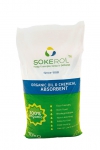Oil & Gas Service
The Company
The prospective client is one of the world’s largest providers of products and services to the energy industry. With more than 72,000 employees, representing 140 nationalities in approximately 80 countries, the company serves the upstream oil and gas industry throughout the lifecycle of the reservoir – from locating hydrocarbons and managing geological data, to drilling and formation evaluation, well construction and completion, and optimising production through the life of the field. Given its status as a prominent fortune 500 company, whose activities are closely monitored by various Environmental Protection Authorities and the media, the client is very concerned about not only meeting, but exceeding the environmental guidelines at its various facilities operating around the world.
The Problem
The site in question was a busy oil and gas services supply base off the east coast of Malaysia. Equipment from offshore rigs was brought to the facility for servicing, cleaning, maintenance and repair before being recommissioned for use on the rigs. There was significant waste oil, grease and a variety of chemical solvents produced in all areas of the 100,000 sq. ft. site which were channelled back to a centralised oil separation system which captured the runoff from these maintenance activities. The oil separation system was not effective enough to comply with the schedule of the Environmental Quality Industrial Effluents Regulations, 2009, with amounts of BOD’s, COD, suspended solids, lead and oil and grease, regularly exceeding the maximum permissible amounts to be allowed to run off in to the environment.
The Sokerol Solution
A holistic assessment of the existing practices and systems for oil capture was undertaken and a number of suggestions for incorporation of Sokerol as part of a facility wide strategy for reducing sump waste, runoff and subsequent contamination of the surrounding environments were made.
This resulted in a 3-tiered approach to reducing total hydrocarbon waste, chemical build up in the sump and the subsequent deleterious effects of these contaminated overflows into the surrounding environment.
- Sokerol 5KG bags and 10KG bags, in loose form were suggested as an on-site sweep to be administered to localised spills on the facility floor to reduce the primary source of contamination, rather than just hosing the entire facility into the sump.
- The installation of a purpose engineered Sokerol filter in the main trench leading to the skimmer mechanism and sump.
- Sokerol Booms floating in 2 different sections of the final sump.
The anticipated maintenance procedure was to inspect the various Sokerol products on a weekly basis. It was expected that the filter would be replaced, on average, once every 2 months with a fresh boom placed in the sump on a weekly basis.
The principle goal of this exercise was to create an immediate, empirically verifiable improvement in the level of contaminants measured in the various sumps at the site, which would lead to significant environmental benefits, through the reduction of contaminated overflows into the adjacent streams, beaches and local waterways.
The secondary goal was to deliver an approximate 50% reduction in the scheduled waste disposal fees, currently averaging approximately RM12,000 per month. This would be achieved through the non-leaching properties of Sokerol, which, in amounts of less than 100kg, could be disposed of in local unlined landfills.


